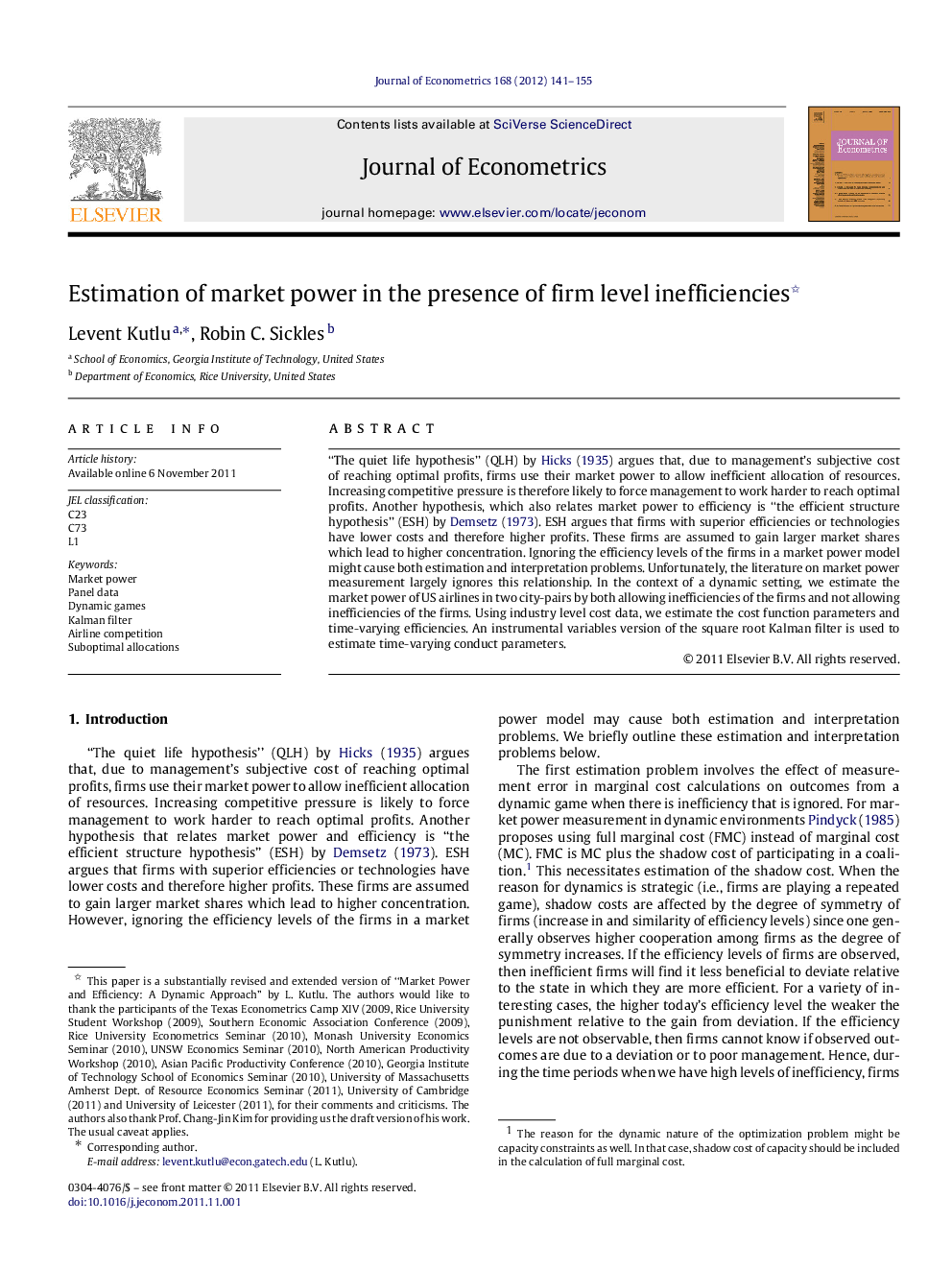| Article ID | Journal | Published Year | Pages | File Type |
|---|---|---|---|---|
| 5096651 | Journal of Econometrics | 2012 | 15 Pages |
Abstract
“The quiet life hypothesis” (QLH) by Hicks (1935) argues that, due to management's subjective cost of reaching optimal profits, firms use their market power to allow inefficient allocation of resources. Increasing competitive pressure is therefore likely to force management to work harder to reach optimal profits. Another hypothesis, which also relates market power to efficiency is “the efficient structure hypothesis” (ESH) by Demsetz (1973). ESH argues that firms with superior efficiencies or technologies have lower costs and therefore higher profits. These firms are assumed to gain larger market shares which lead to higher concentration. Ignoring the efficiency levels of the firms in a market power model might cause both estimation and interpretation problems. Unfortunately, the literature on market power measurement largely ignores this relationship. In the context of a dynamic setting, we estimate the market power of US airlines in two city-pairs by both allowing inefficiencies of the firms and not allowing inefficiencies of the firms. Using industry level cost data, we estimate the cost function parameters and time-varying efficiencies. An instrumental variables version of the square root Kalman filter is used to estimate time-varying conduct parameters.
Related Topics
Physical Sciences and Engineering
Mathematics
Statistics and Probability
Authors
Levent Kutlu, Robin C. Sickles,
